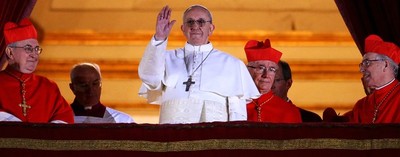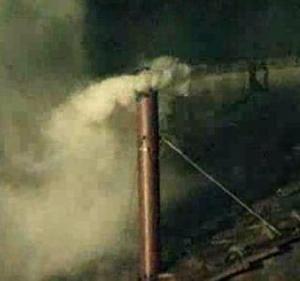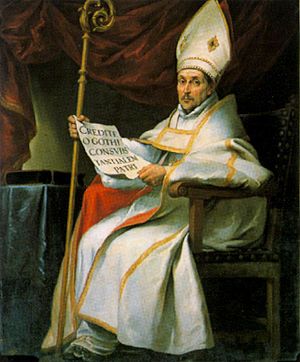Pope Francis’ schedule in the coming days
Fr. Lombardi confirmed that the Mass for the inauguration of the Petrine Ministry will be held March 19th, the feast of St. Joseph, at 9:30 Rome time.
He also confirmed that the Mass for the closure of Conclave will be at 17:00 (5:00pm) Thursday in the Sistine Chapel. On Friday, at 11 a.m., there will be an audience with the College of Cardinals in the Clementine Hall. That on Saturday 11 a.m. Pope Francis I will have audience with all journalists and media covering conclave- an announcement greeted with a round of applause in the briefing hall. And finally on Sunday Pope Francis will recite Angelus at noon.
Thursday, Pope Francis will make a private visit to a sanctuary of Our Lady on Thursday March 14th, but details will be released only when this visit is over.
Pope Francis imparts his first Apostolic Blessing “Urbi et Orbi”
Brothers and sisters, good evening!
You know that it was the duty of the Conclave to give Rome a Bishop. It seems that my brother Cardinals have gone to the ends of the earth to get one… but here we are… I thank you for your welcome. The diocesan community of Rome now has its Bishop. Thank you! And first of all, I would like to offer a prayer for our Bishop Emeritus, Benedict XVI. Let us pray together for him, that the Lord may bless him and that Our Lady may keep him.
Our Father…
Hail Mary…
Glory Be…
Continue reading Pope Francis imparts his first Apostolic Blessing “Urbi et Orbi”
Jorge Mario Bergoglio’s coat of arms: Miserando atque Eligendo
The episcopal motto of the new Pope’s coat of arms, Miserando atque Eligendo (“By having mercy and by making decisions [in following Christ]”; it could also read, “by showing compassion [the Lord called] and by choosing [to follow Him]). The motto is extracted from a homily of Saint Bede the Venerable (Homily 21) on a passage from the Gospel of Saint Matthew read in the breviary on the saint’s feast on 25 May: “Vidit ergo Iesus publicanum, et quia miserando atque eligendo vidit, ait illi, Sequere me.” (Jesus looked at the publican, and because he looked with mercy and choosing, said to him, ‘Follow me.’)
 Bergoglio knew who gazed upon him and decided to follow.
Bergoglio knew who gazed upon him and decided to follow.
Saint Bede said,
Jesus saw a man called Matthew sitting at the tax office, and he said to him: ‘Follow me.’ Jesus saw Matthew, not merely in the usual sense, but more significantly with his merciful understanding of men.
He saw the tax collector and, because he saw him through the eyes of mercy and chose him, he said to him: ‘Follow me.’ This following meant imitating the pattern of his life – not just walking after him. Saint John tells us: “Whoever says he abides in Christ ought to walk in the same way in which he walked.”
“And he rose and followed him.” There is no reason for surprise that the tax collector abandoned earthly wealth as soon as the Lord commanded him. Nor should one be amazed that neglecting his wealth, he joined a band of men whose leader had, on Matthew’s assessment, no riches at all. Our Lord summoned Matthew by speaking to him in words. By an invisible, interior impulse flooding his mind with the light of grace, he instructed him to walk in his footsteps. In this way Matthew could understand that Christ, who was summoning him away from earthly possessions, had incorruptible treasures of heaven in his gift.
The coat of arms will change soon.
The Attraction of the Cardinal
The following article on Cardinal Jorge Bergoglio, SJ, today elected Pope Francis, is taken from Traces, (June 2001) the monthly magazine of Communion and Liberation.
At the Buenos Aires International Book Fair, the largest in South America, the Argentinian Primate presented the Spanish edition of L’attrattiva Gesù [The Attraction that is Jesus]. “The locus of the encounter is the caress of the mercy of Jesus Christ on my sin”
By Silvina Premat
The Archbishop of Buenos Aires, recently named Cardinal, Jorge Mario Bergoglio, presented El atractivo de Jesucristo, published by Encuentro, at the International Book Fair in Buenos Aires which was entitled, “The Book, from the Author to the Reader.” The book exhibition is the largest in Latin America. For twenty days, a million people visit the 25,000 square meters of stands set up by more than 1,300 exhibitors (publishing houses, bookstores, foundations, embassies, and regions). They seek to know an internationally famous writer, hear a lecture on a topical theme, or find an interesting offer.
Three brief profiles of Pope Francis
America Magazine wrote on 18 April 2005,
Cardinal Jorge Mario Bergoglio, a 68-year-old Jesuit who has a growing reputation as a very spiritual man with a talent for pastoral leadership. An author of books on spirituality and meditation, since 1998 he has been archbishop of Buenos Aires, where his style is low-key and close to the people. He rides the bus, visits the poor and a few years ago made a point of washing the feet of 12 AIDS sufferers on Holy Thursday. He also has created 17 new parishes, restructured the administrative offices, led pro-life initiatives and started new pastoral programs, such as a commission for divorced people. He co-presided over the 2001 Synod of Bishops and was elected to the synod council, so he is well known to the world’s bishops.
John Thavis’ piece, “First Thoughts about Pope Francis.”
Plus, John Allen has a profile of Pope Francis written for the NCR.
Pope Francis, the new Bishop of Rome, the Supreme Pontiff, the First American Pope
In English
We have a Pope!
Ratzinger on the Holy Spirit electing a pope
The well-known journalist John Allen quoted Pope Benedict about the role of the Holy Spirit’s work in the conclave:
Cardinal Joseph Ratzinger was asked on Bavarian television in 1997 if the Holy Spirit is responsible for who gets elected. This was his response:
I would not say so, in the sense that the Holy Spirit picks out the Pope. … I would say that the Spirit does not exactly take control of the affair, but rather like a good educator, as it were, leaves us much space, much freedom, without entirely abandoning us. Thus the Spirit’s role should be understood in a much more elastic sense, not that he dictates the candidate for whom one must vote. Probably the only assurance he offers is that the thing cannot be totally ruined.
Further:
There are too many contrary instances of popes the Holy Spirit obviously would not have picked!
Saint Leander of Seville
The Church honors a Spanish saint that many I am sure have not heard about, or know very little of today, Saint Leander of Seville (c. 534-c.600). His parents were known to be pious, his brothers were the famous Saint Isidore of Seville and Saint Fulgentius of Ecija and his sister was Saint Florentina of Cartegena. Leander was both a Benedictine monk and bishop in Seville.











